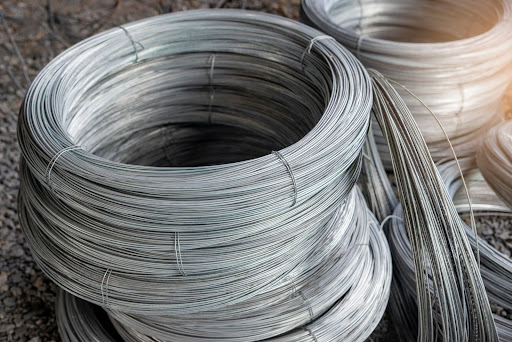Stainless steel is an incredibly popular material, and for good reason. It’s durable, easy to clean, can last a very long time, and is appealing to look at. However, despite its popularity and widespread use, there are still some misconceptions surrounding it. Here’s a look at five of those stainless steel myths.
Stainless Steel Can Never Rust
While stainless steel resists corrosion better than most other metals, it can still corrode under extreme conditions. Stainless steel’s corrosion resistance comes from a chromium oxide layer that forms spontaneously on its surface.
However, in more aggressive environments like seawater or areas with high chloride concentrations, this passive layer can break down, leading to rust. Other factors like surface finish and fabrication practice also play a major role in its resistance to corrosion. So, stainless steel — despite its superb corrosion resistance — can still experience corrosion when exposed to the right environmental factors for long enough.
There’s Only One Type of Stainless Steel
There are actually various stainless steels designed for different applications. The most common types include austenitic, ferritic, martensitic, and duplex stainless steel. Each type has unique properties due to the different alloying elements like nickel, molybdenum, and chromium.
For instance, austenitic stainless steels are known for their excellent corrosion resistance and are often used in kitchenware like stainless steel sinks. By contrast, ferritic stainless steels have different magnetic properties and are typically less expensive. This variety allows stainless steel to be tailored for specific applications and environments.
Stainless Steel Products Are Expensive
Although stainless steel can sometimes have a higher initial cost compared to materials like carbon steel or aluminum, its durability and low maintenance requirements often result in lower lifetime costs. Stainless steel’s resistance to rust and general corrosion means it doesn’t need constant replacement or extensive maintenance, unlike less corrosion-resistant materials. Additionally, the manufacturing process for stainless steel has become more efficient, reducing costs. In the long run, investing in stainless steel can be more cost-effective due to its longevity and minimal upkeep.
You Can’t Recycle Stainless Steel
Stainless steel is highly recyclable and retains its properties after recycling, which makes it an environmentally friendly material. The recycling process involves melting down stainless steel scrap, which can then be used to produce new stainless steel products without any degradation in quality.
In contrast, other materials can lose performance characteristics when recycled. The high recyclability of stainless steel helps reduce the demand for raw materials, thereby decreasing the environmental impact of its production.
Stainless Steel Isn’t Magnetic
The magnetic properties of stainless steel depend on its microstructure and alloy composition. Austenitic stainless steels, which are the most common types used in applications requiring high corrosion resistance, generally have low magnetic permeability.
However, other stainless steels, such as ferritic and martensitic, do exhibit magnetic properties similar to carbon steels. The presence of iron and other alloying elements in these stainless steels contributes to their magnetism. As such, while some stainless steel types are non-magnetic, others can be strongly magnetic, depending on their specific alloying and manufacturing processes.
Reach Out to Wickwire Warehouse Today
At Wickwire Warehouse, we supply customers around the country with the high-quality stainless steel wire they need for their various needs. In addition, we’re also proud to provide galvanized wire, bright wire, and many other trusted products. Get in touch with us today to learn more and to place an order!

